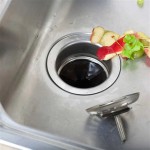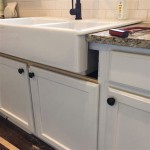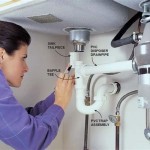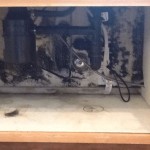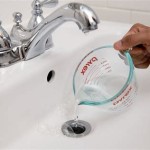How To Unstop A Clogged Sink
A clogged sink is a common household plumbing issue. It can manifest as slow draining, gurgling sounds, or a complete blockage of water flow. Addressing a clogged sink promptly can prevent further complications, such as overflowing and potential water damage. This article provides a detailed guide on various methods to effectively unclog a sink, ranging from simple DIY techniques to more advanced approaches.
Identifying the Cause of the Clog
Before initiating any unclogging method, it is beneficial to understand the likely cause of the blockage. Common culprits include hair, soap scum, food particles, grease, and mineral buildup. The location of the clog can also influence the chosen approach. A clog near the drain opening might be easily accessible, whereas one deeper in the plumbing system may require more intensive methods.
Observing the characteristics of the draining problem can offer clues. A gradual slowing of drainage over time often indicates a buildup of debris, while a sudden and complete blockage may suggest a larger, more immediate obstruction. Inspecting the sink strainer or stopper for accumulated debris is a good first step. Removing any visible obstructions can sometimes resolve the problem without further intervention.
Simple DIY Methods
Several straightforward techniques can often resolve minor sink clogs. These methods typically involve readily available household items and require minimal plumbing knowledge. They are a good starting point before resorting to more complex or chemical-based solutions.
Hot Water Flush: This is the simplest method and often effective for clogs caused by grease or soap scum. Boiling water can help dissolve these substances and clear the drain. It is crucial to exercise caution when pouring boiling water, avoiding splashes and protecting surfaces from heat damage. This method is generally not recommended for PVC pipes, as the extreme heat could potentially damage them. Instead, use very hot, but not boiling, water.
Baking Soda and Vinegar: This combination creates a chemical reaction that can break down organic matter contributing to the clog. Start by pouring approximately one cup of baking soda down the drain, followed by one cup of white vinegar. Let the mixture fizz for about 30 minutes, then flush with hot water. The bubbling action helps to dislodge debris from the pipe walls.
Plunger: A standard cup plunger can create suction to dislodge clogs. Ensure there is enough water in the sink to cover the cup of the plunger. Create a tight seal around the drain opening and plunge vigorously up and down for several minutes. Periodically lift the plunger to check if the water drains more freely. Repeat the process if necessary. Covering the overflow drain with a wet cloth or duct tape can improve the plunger's effectiveness by preventing air from escaping.
Using a Plumber's Snake (Drain Auger)
A plumber's snake, also known as a drain auger, is a flexible tool designed to physically break up or retrieve clogs located deeper within the drainpipe. It is a more effective solution than DIY methods for tougher obstructions or clogs further down the drain line.
Procedure for Use: Insert the end of the plumber's snake into the drain opening. Rotate the handle to advance the snake through the pipe. If you encounter resistance, continue rotating and applying gentle pressure to break through the clog. Once you feel the snake has passed through the obstruction, continue to rotate and retract the snake slowly. This will help to pull any dislodged debris back up with the snake. Carefully remove the snake from the drain and clean off any collected debris. Flush the drain with hot water to ensure the clog has been completely removed.
Types of Plumber's Snakes: There are different types of plumber's snakes available, ranging from small, hand-cranked models suitable for minor clogs to larger, more powerful electric augers for tackling more stubborn blockages. Choosing the appropriate snake depends on the severity and location of the clog.
Inspecting and Cleaning the P-Trap
The P-trap is the curved section of pipe located beneath the sink. Its primary function is to trap debris and prevent sewer gases from entering the building. However, it is also a common location for clogs to form. Inspecting and cleaning the P-trap can often resolve a clogged sink issue.
Procedure: Place a bucket or container under the P-trap to catch any water that may spill out. Carefully loosen the slip nuts that connect the P-trap to the drainpipes. It may be necessary to use channel-lock pliers to loosen the nuts. Once the nuts are loose, carefully detach the P-trap. Empty the contents of the P-trap into the bucket. Inspect the P-trap for any accumulated debris. Remove any visible obstructions. Rinse the P-trap thoroughly with water to ensure it is clear. Reattach the P-trap and tighten the slip nuts securely. Run water into the sink to check for leaks. If leaks are present, tighten the nuts further until the leaks stop.
Safety Precautions: Wear gloves when handling the P-trap, as it may contain bacteria and unpleasant odors. Be careful not to overtighten the slip nuts, as this can damage the pipes. Ensure the bucket is positioned correctly to prevent water from spilling onto the floor.
When to Call a Professional Plumber
While the methods described above can effectively resolve many clogged sink issues, certain situations may warrant the assistance of a professional plumber. Attempting to fix complex plumbing problems without the necessary knowledge and tools can potentially worsen the situation and lead to more costly repairs.
Recurring Clogs: If clogs frequently occur in the same sink, it may indicate a more serious underlying issue, such as a blockage in the main drain line or a problem with the venting system. A plumber can diagnose the root cause of the problem and provide a long-term solution.
Multiple Clogged Drains: If multiple drains in the house are clogged simultaneously, it is likely a sign of a blockage in the main sewer line. This type of blockage requires specialized equipment and expertise to resolve.
Suspected Damage to Pipes: If you suspect that the pipes are damaged or corroded, it is essential to consult a plumber. Attempting to repair damaged pipes yourself can be dangerous and may result in water damage.
Lack of Experience: If you are uncomfortable working with plumbing or lack the necessary tools and equipment, it is best to call a professional plumber. They have the experience and expertise to quickly and efficiently unclog your sink without causing further damage.
Dealing with drain issues, especially clogs, is often frustrating and time consuming. While the advice above can assist in resolving most typical instances, it is essential to know your limitations. If you notice any persistent or severe issues, or if you are unsure about performing these procedures, consulting a trained professional may save you time, money and potential water damage to your home.
Prevention is always better than cure. Regular maintenance of your home plumbing can prevent potential issues before they arise. Taking simple precautions, such as using drain covers, preventing food waste from washing down the drain and regularly flushing your plumbing with hot water, can significantly decrease the potential for drain blockages in the future.
Additionally, when dealing with plumbing issues, always prioritize safety. Wear appropriate safety gear, understand the potential risks involved and never hesitate to call a professional if you are unsure on how to proceed. By taking these precautions, resolving a clogged sink can be a straightforward task, avoiding further complications and ensuring the functionality of your home plumbing system.

How To Unclog A Sink The Experts Simple Steps Drain

How To Unclog A Sink The Right Way

How To Unclog A Sink

How To Unclog A Sink In Your Home Racv

How To Unclog A Sink 12 Easy Ways

How To Unclog A Kitchen Sink Using Baking Soda And Vinegar

How To Unclog A Slow Running Bathroom Sink Drain 10 Options

How To Unclog A Drain In 5 Simple Steps Dauenhauer

How To Unclog A Bathroom Sink Hana S Happy Home

How To Unclog A Bathroom Sink Hana S Happy Home
